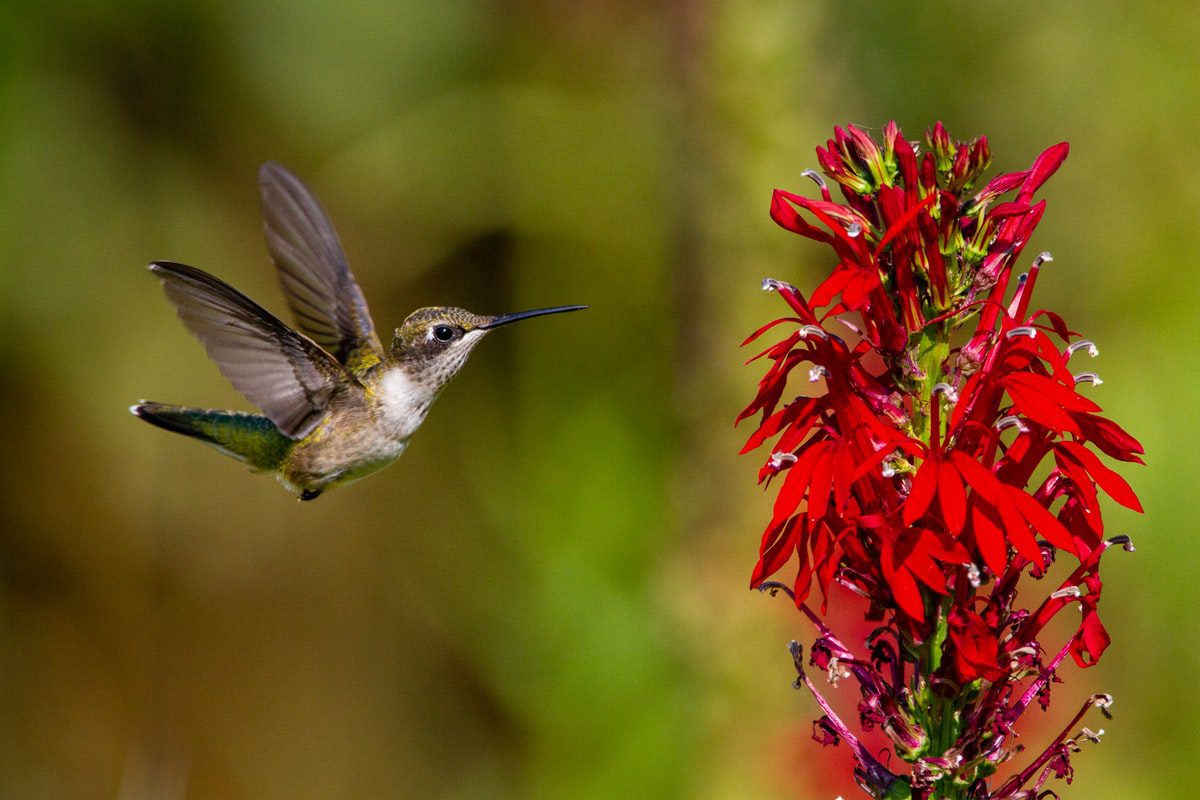Cardinal Flower Attracts Pollinators

Joshua J. Cotten
Cardinal flower (Lobelia cardinalis) is a native herb that grows along riverbanks and is occasionally found in garden flower beds as a perennial. Cardinal Flower features showy spikes of scarlet flowers rising above the foliage from mid summer to early fall. Its pointy leaves remain dark green in colour throughout the season.
It attracts birds, butterflies and hummingbirds, while being rabbit and deer resistant. The blossoms make great cut flowers.
Quick Growing Guide
Botanical Name: Lobelia cardinalis
Also Called: Cardinal flower, Indian Tobacco, Edging Lobelia, Asthma Weed, Vomitweed, Pukeweed
En français: Lobélie cardinale
Colour:
Blooms:
Sun / Shade:
Water: Needs constant moisture, add mulch.
Height:
Pollinators:
Care:
Photo Credit: Dwight Sipler via Wikimedia Commons
The Cardinal flower is named after the bright red robes worn by Roman Catholic cardinals. Roots, finely ground, are said to be an aphrodisiac when placed in food, although this is not recommended.
Where to Plant
The Cardinal flower prefers sun or part shade and moist soils, and should be grown in a location that is shaded from the hot afternoon sun. They grow best in morning sun and afternoon shade.
It is quite adaptable, preferring to grow in average to wet conditions, and will even tolerate some standing water. It is not drought tolerant, but it is heat and cold tolerant. It is not pH sensitive, but grows best in rich soils.
Its natural habitat includes along streams and pond edges, meadows, ditches, ravines, prairies, plains. Popular landsacpe use includes as edging, trailing, hanging baskets, window boxes, patio or deck railing planters.
Propagating Lobelia cardinalis
This plant’s seeds require cold stratification. Plant fresh plants approximately 1 foot apart in the spring, and keep the soil wet while the seedlings grow. Mulch will assist to keep the soil wet. Germination time is 14 days at consistently warm (about 70 degrees Fahrenheit or 20 degrees Celsius)
It may be propagated by burying a stem in mud and securing it with pebbles or sticks.
Before planting, incorporate lots of compost and organic matter into the soil. It is advisable to fertilise twice a month with a water-soluble liquid fertiliser rich in phosphorus. A couple of inches of organic mulch on the soil’s surface helps retain moisture in.
Caring for Cardinal Flower
This plant should be grown in a location that is shaded from the hot afternoon sun. It is quite adaptable, preferring to grow in average to wet conditions, and will even tolerate some standing water. It is not particular as to soil pH, but grows best in rich soils.
Deadheading
To stimulate additional blooms, deadhead often. To stimulate additional blossoming, trim the entire plant back by approximately half an inch after the initial flowering.
Plants may stop blossoming during the summer months if allowed to grow too dry. If this happens, a good trimming followed by a deep watering should help. Keep the soil uniformly wet in the future.
Companion Plants
Companion plant suggestions include Swamp milkweed, Bristly buttercup, Wild Iris, Swamp rose, Sweet Alyssum, Verbena plant, Marigold flowers, and heat tolerant Phlox plant..
Pruning Lobélie cardinale
In order to get the best plant for flowering, prune the Cardinal plant right after it has finished flowering in early summer. By doing so, you will avoid cutting off flower buds that developed from the previous season and help this perennial grow strong wood for its next blooming cycle.
Pests
While aphids are the most common pest, leafhoppers, slugs, snails and spider mites can also inhabit the plant.
Medicinal
This plant contains lobeline, which caused poisoning when misused as a home medicine. Some Native Americans used the roots in tea for stomach aches, syphillis, typhoid or worms. The leaves were used in tea for colds, nosebleeds, fevers and headaches.


